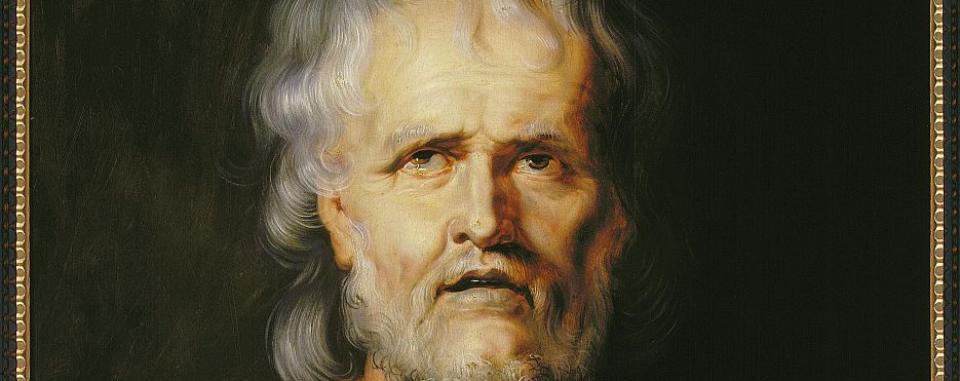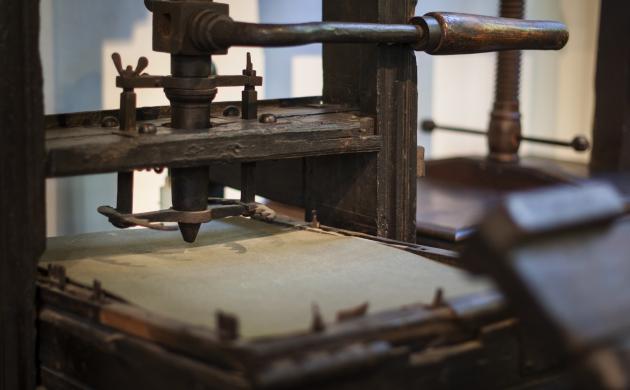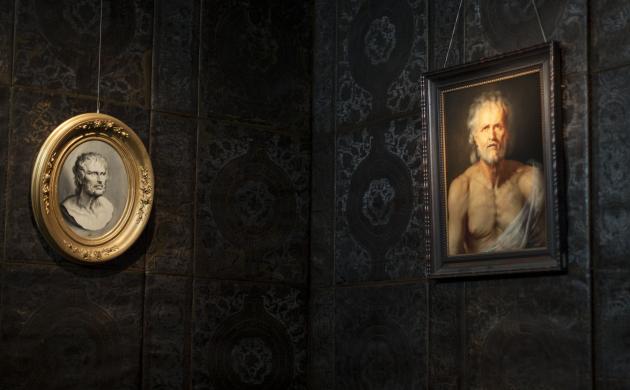Symbol of humanism
This oil painting by Peter Paul Rubens (panel, 1613-1616) is an indication of the great admiration that Balthasar I Moretus had for Seneca. For him and many other humanists, Seneca’s philosophical and literary works were of great importance. They saw their own ideas and principles expressed in Seneca’s Stoic philosophy.
Obligatory suicide
Lucius Annaeus Seneca (circa 5 BC - 65 AD) acquired great fame as a rhetorician in the early Roman Empire. The empress Agrippina appointed him as tutor to the young Nero. During Nero’s reign, Seneca therefore held a position of great power and influence in the Roman Empire. Nero suspected him of participating in a conspiracy against him and forced him to commit suicide in 65 AD.




